Shimano GRX components are designed specifically for the needs of gravel, adventure and all-road riding, with gearing and features that differ from the brand’s road ranges.
With options to suit a range of budgets, GRX mechanical offers dependable performance and useful compatibility with Shimano’s road drivetrains.
GRX isn’t exactly one single groupset in its own right, but rather it’s a range of components that sits alongside Shimano’s road groupsets. There aren’t GRX equivalents for every road component at every level, so GRX-equipped bikes will often mix different levels of components.
As a reminder, the GRX naming system works like this:
- RX400 series: 10-speed Tiagra-equivalent
- RX600 series: 11-speed 105-equivalent, with additional 10-speed crank option to match RX400
- RX800 series: 11-speed Ultegra-equivalent with mechanical and Di2 variants
This review will focus on more-or-less the cheapest possible 2×11-speed mechanical setup with RX600 levers, but I’ll discuss the alternatives, and why you might consider going up or down the range.
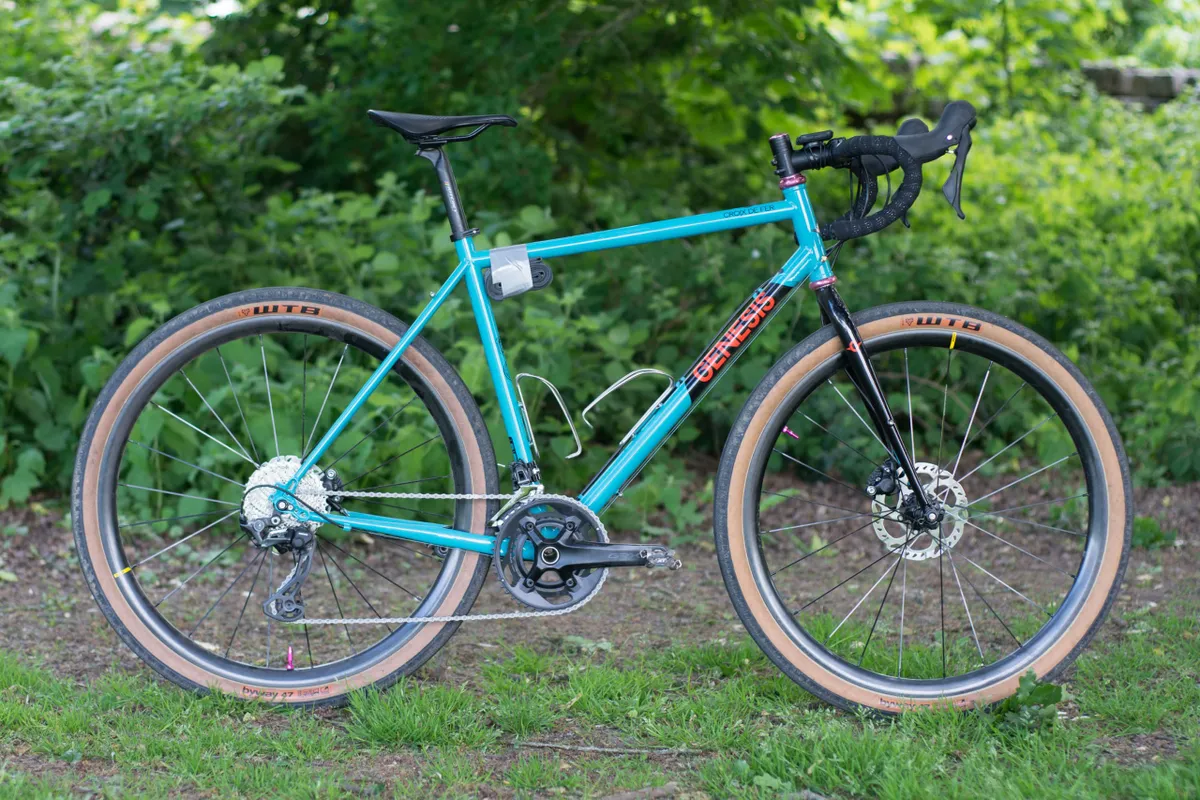
My test bike, a Genesis Croix de Fer 853, which I detailed in a BR Builds article last year, was equipped with the following:
- Levers: ST-RX600 levers
- Rear derailleur: RD-RX810
- Front derailleur: FD-RX810
- Crankset: FC-RX600 46/30
- Bottom bracket: SM-BBR60
- Cassette: CS-HG700-11 11-34
- Brake calipers: BR-RX400
I’ve also spent a good deal of time riding gravel bikes fitted with both higher and lower spec GRX groupsets, including the likes of the Canyon Grail 6 and Grail CF SL 7.0, and the Enigma Escape, and I’ve drawn from the experiences of the rest of the BikeRadar team in writing this review.
Shimano GRX levers, shifting and braking
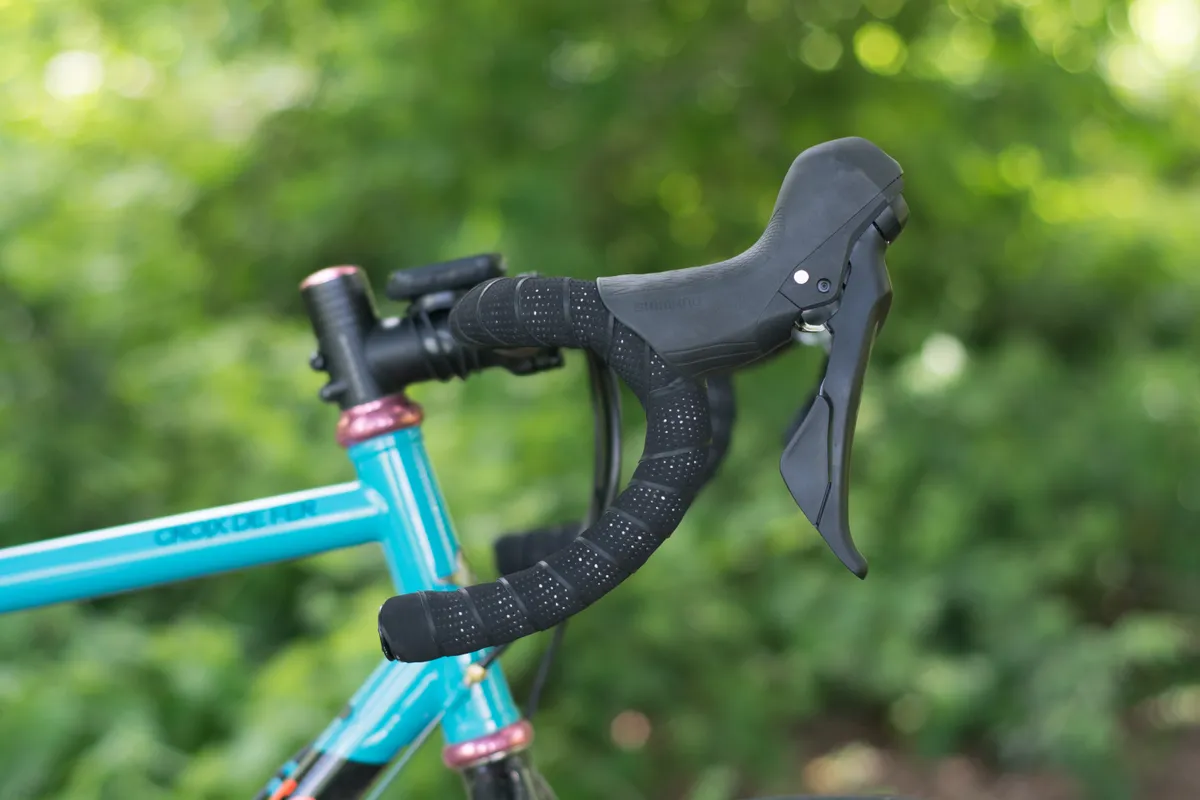
Side-by-side with a Shimano 105 road lever, the overall shape and design of the RX600 is very similar, although there are subtle differences, for example in the precise sculpting of the lever blades.
While there’s only one RX600 right-hand lever, the left comes in two versions: one for 2× drivetrains, and a variant for 1× that skips the shifting internals.
In addition to the standard levers, GRX also offers the option to fit cyclocross-style inline hydraulic levers that allow braking from the bar tops.
Compared to Shimano’s glossy 105 road levers, the RX600s also have a more muted, grippy finish that feels a bit like the soft-touch plastic you get in modern car interiors.
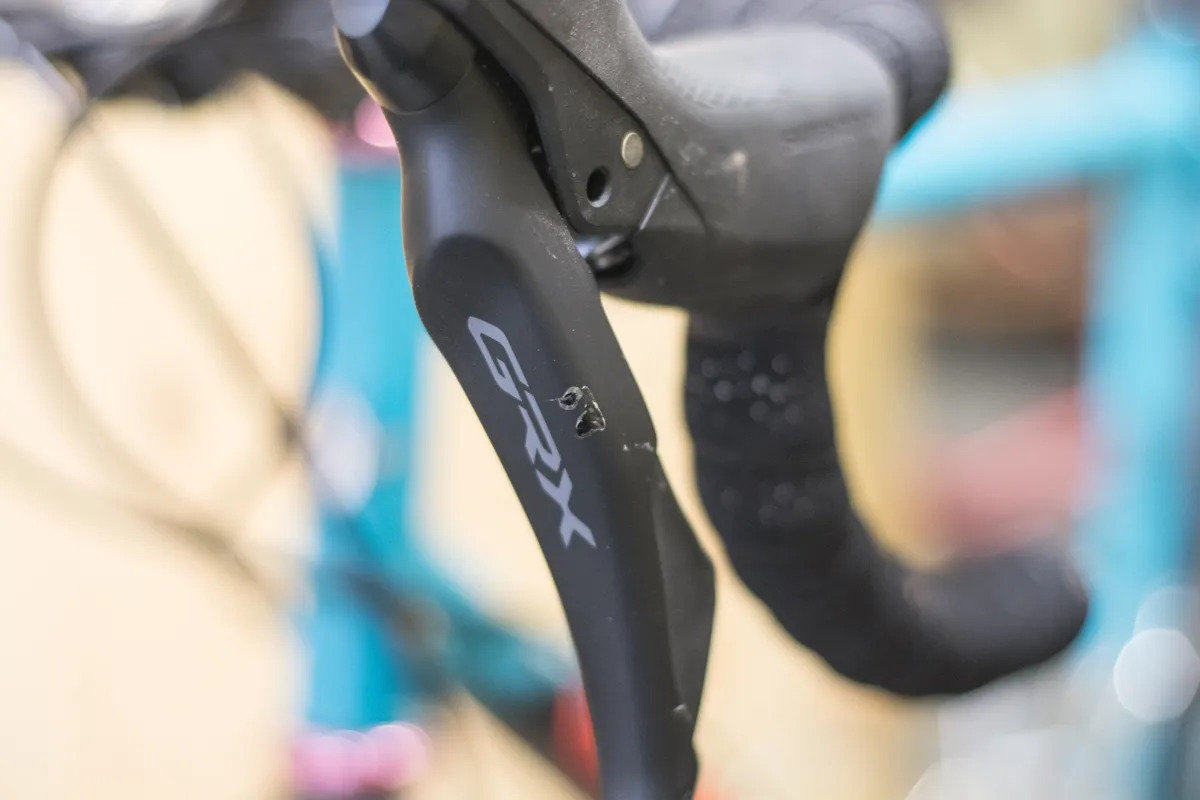
This appears to be a coating, and I did manage to inflict some damage on it during testing, but nothing too dramatic.
If you pull the lever and let it spring back against its stop, the RX600 is quieter and feels more damped than 105, which might make it less prone to rattling over really rough ground. It’s not a huge difference, though, and 105 levers are hardly noisy anyway.
Shifting feel is largely defined by the levers and the RX600s are much like their road counterparts, with a light snick from gear to gear that's somewhere between metallic and plasticky.
The action is light for both front and rear shifts, and the right lever offers single upshifts (to harder gears) and up to three downshifts (to easier gears).
As ever with Shimano, the front shifting includes trim positions, which feel intuitive and natural in use.
If you’re fitting your own levers, setup and bleeding arrangements are pretty well identical to Shimano’s current road groupsets. If you’re coming from an older groupset, you’ll need a small adaptor in addition to the standard Shimano bleed cup that you fill with fluid at the lever.
Shimano uses mineral oil as a braking fluid, and both OEM (original equipment manufacturer) and aftermarket bleed kits are widely available.
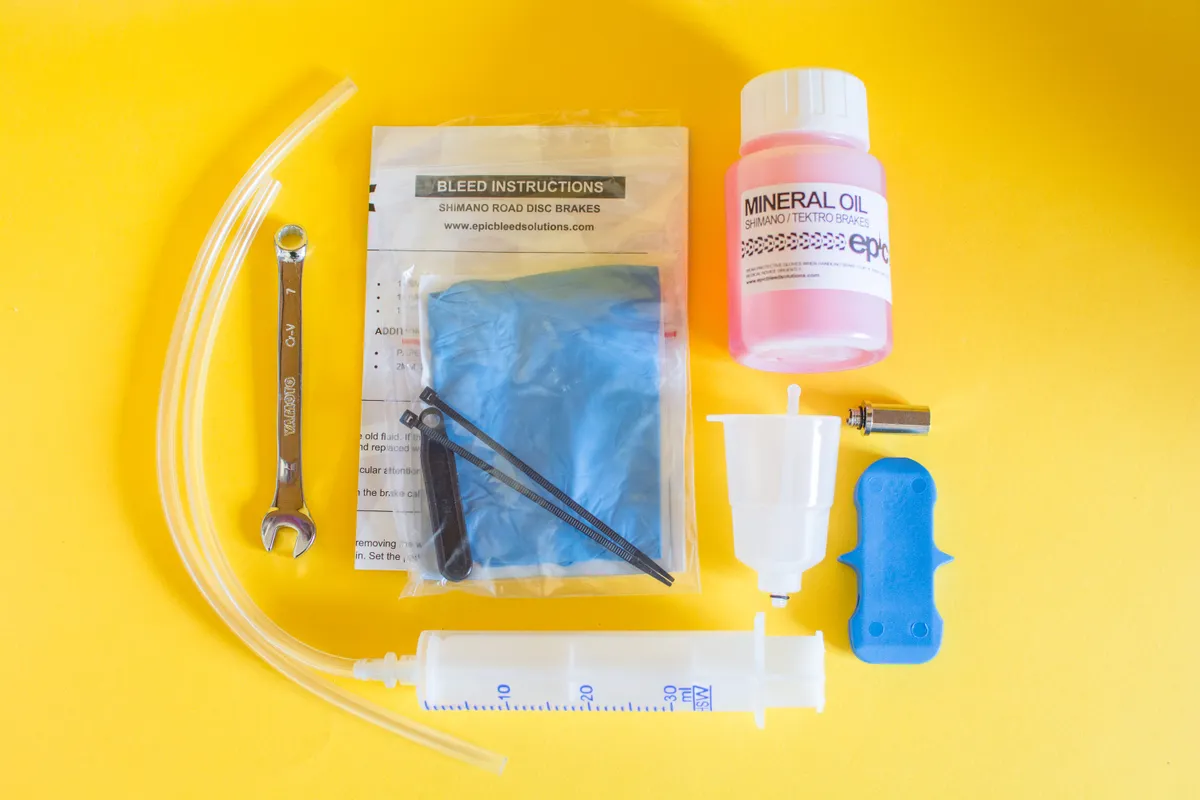
I used a kit from Epic Bleed Solutions when I built my test bike up and had no complaints.
RX600 vs. RX810 vs. RX400 levers
If you’re going 11-speed, you might wonder if it’s worth opting for the more expensive 11-speed Ultegra-equivalent RX810 levers.
These are lighter by a claimed margin of just 43g, so weight probably isn’t sufficient justification. They also have a shifting feel that's slightly crisper and more metallic than the RX600s, but the difference isn't huge.
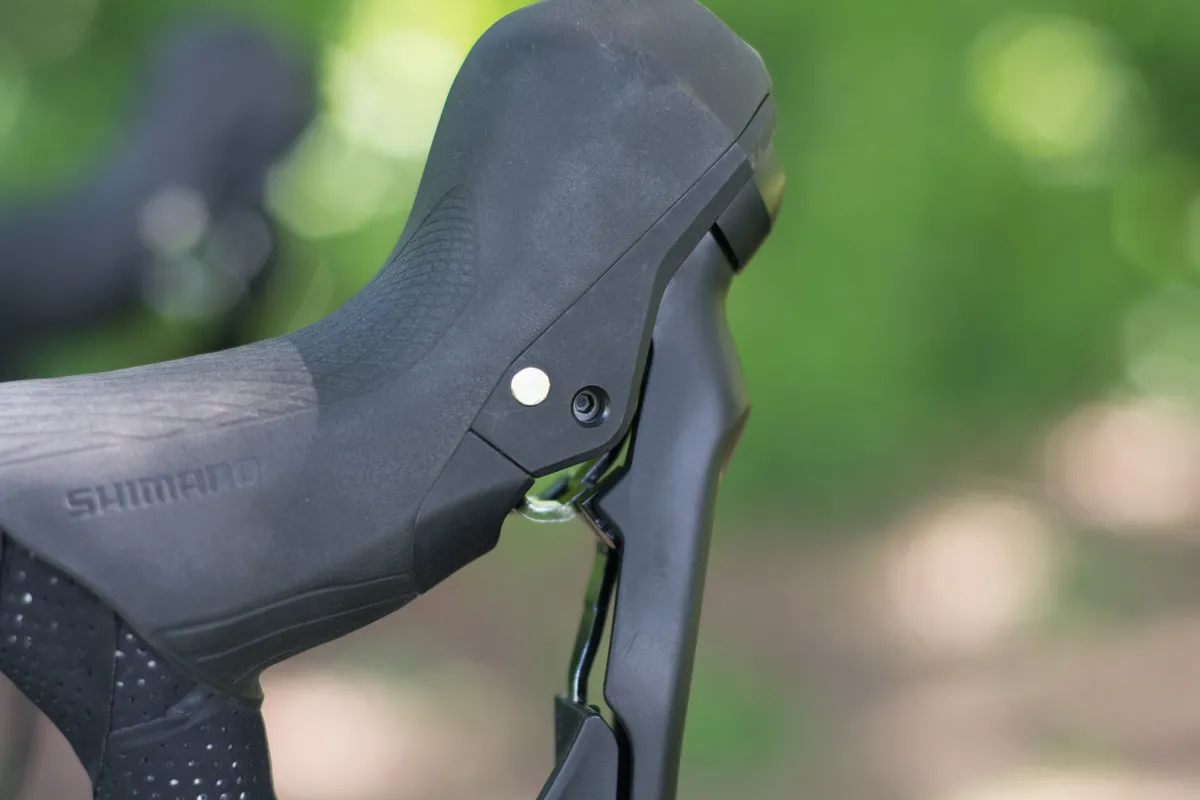
There are three key differences to consider, though.
While all GRX levers (including 10-speed RX400) have built-in reach adjustment, only the top-level RX800 series levers (mechanical and Di2) have free-stroke adjustment. In practice, the range of free-stroke adjustment available is quite small, and I didn’t miss it with the cheaper levers.
In addition, only the top-level gets Servo Wave braking, a concept borrowed from Shimano’s mountain bike brakes that makes the relationship between lever and pad travel non-linear. Initially, the pads move quicker to make contact with the rotor, then later in the stroke pad, speed is traded for increased power and control.
I’d put Servo Wave in the ‘nice to have, but in no way essential’ category. Having ridden both variants, the difference isn’t noticeable once you’re used to the braking, and those levers that lack the feature still offer excellent power and modulation.
The final feature that only RX810 shifters offer is dropper post compatibility for 1×-equipped bikes. The ST-RX810-LA left lever has no shifting ability, but can be used to operate a cable-activated dropper.
Shimano GRX crankset and bottom bracket
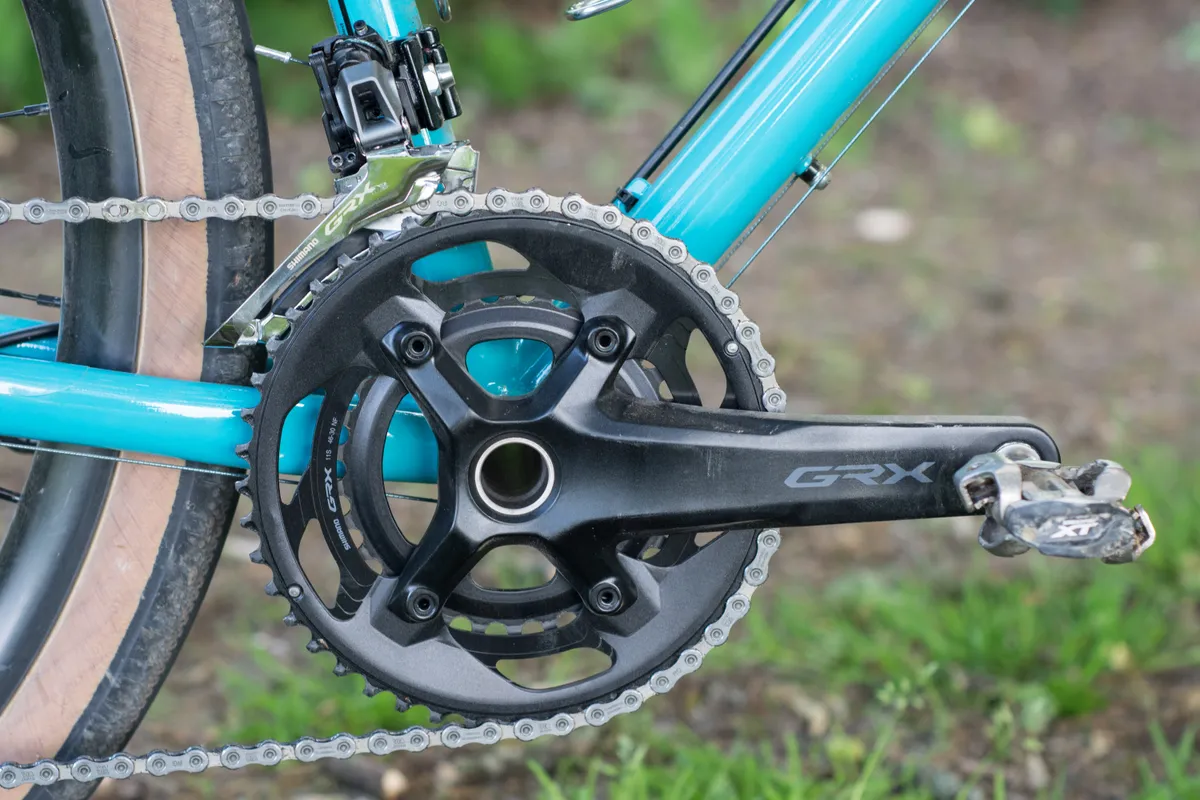
The RX600 crankset uses a now-fashionable asymmetric four-arm design and is made from aluminium alloy.
It’s based on Shimano’s familiar Hollowtech II bottom bracket standard, which is available in both threaded and press-fit (BB86) options.
Bottom brackets are shared with the road range, and the crank splits into two parts with the axle fixed to the driveside.
Aesthetically, there’s something slightly mountain bike-esque about GRX. Unlike the road cranks, which feature a closed-off axle, GRX uses an open design, with a hole in the driveside.
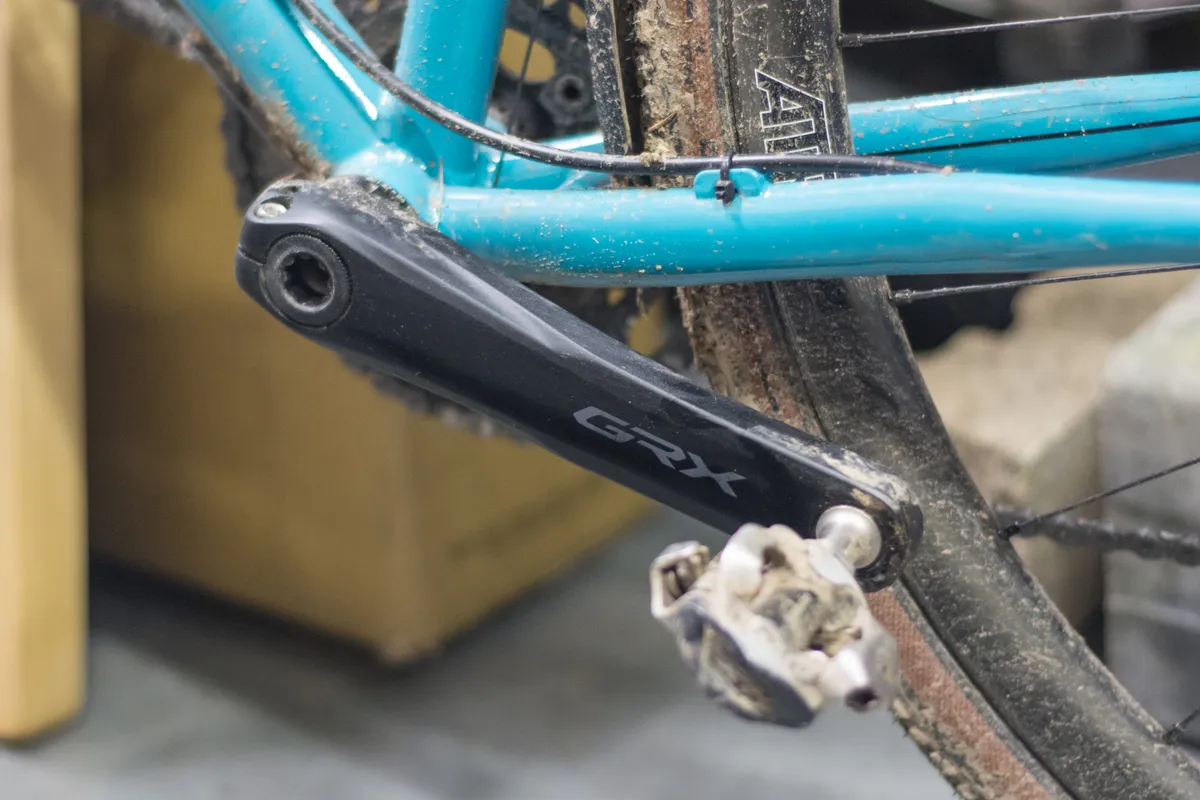
The finish is definitely better suited to the rigours of gravel riding than that of the road groupsets. I have a tendency to mark cranks with my heels-in pedalling style, but – perhaps partly because of its shape – the RX600 crank’s finish has proved resilient through heavy-duty muck.
With the bottom bracket installed in the frame, installing or removing the crank is extremely easy. You need a special tool for the bearing preload cap, which is widely available for less than £3 / $5.
GRX cranks have a chainline that’s 2.5mm wider than that of Shimano’s road cranks. (Chainline is the distance from the centre-line of the bike to the middle of the chainring on a 1× setup, or to a point halfway between the two chainrings on a 2× crankset.) This increases tyre clearance and works better with the wider rear spacing found on some gravel bikes.
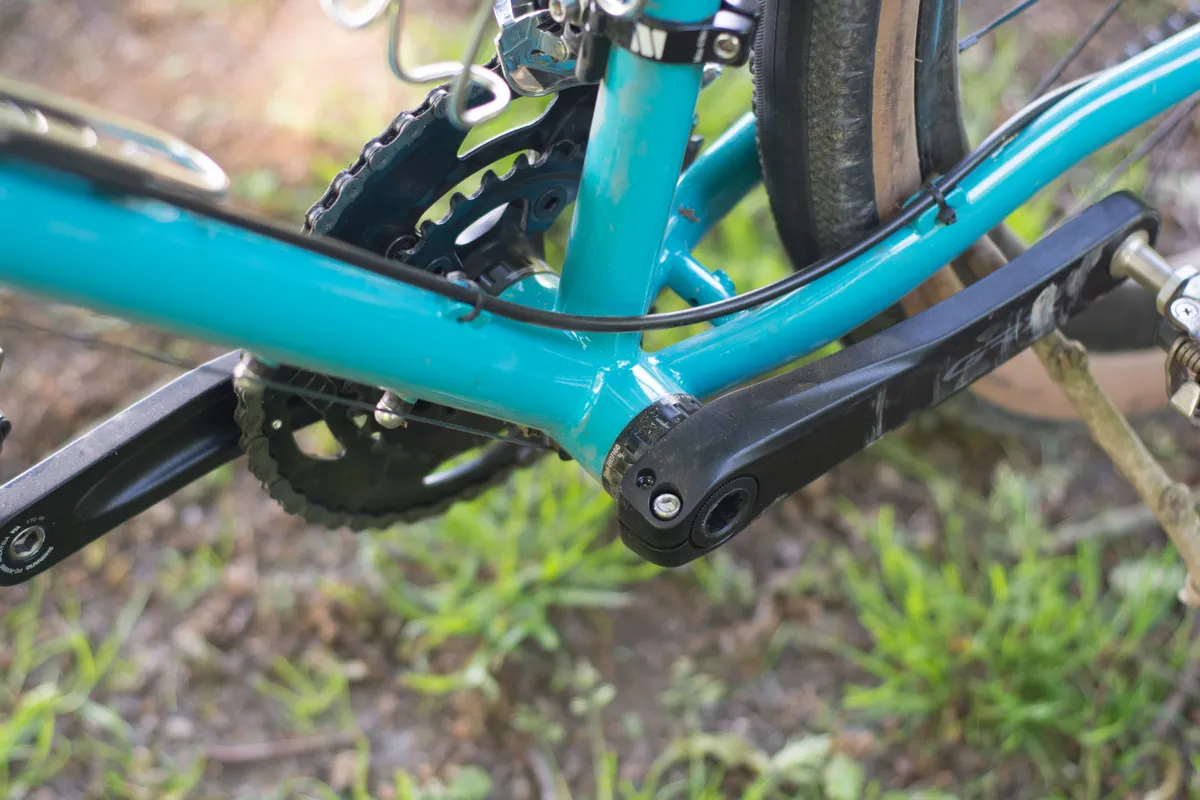
This means that for 2× setups you’ll need a GRX front derailleur – a road one won’t work properly.
The 2×11-speed RX600 crank is 46/30 only – if you want the bigger 48/31 option, you’ll need the more expensive RX810 2× crank.
The 1× RX600 option gets a 40t chainring, while the 1× RX810 crank gives you the choice of 40t or 42t rings.
Shimano GRX rear derailleur, cassette and chain
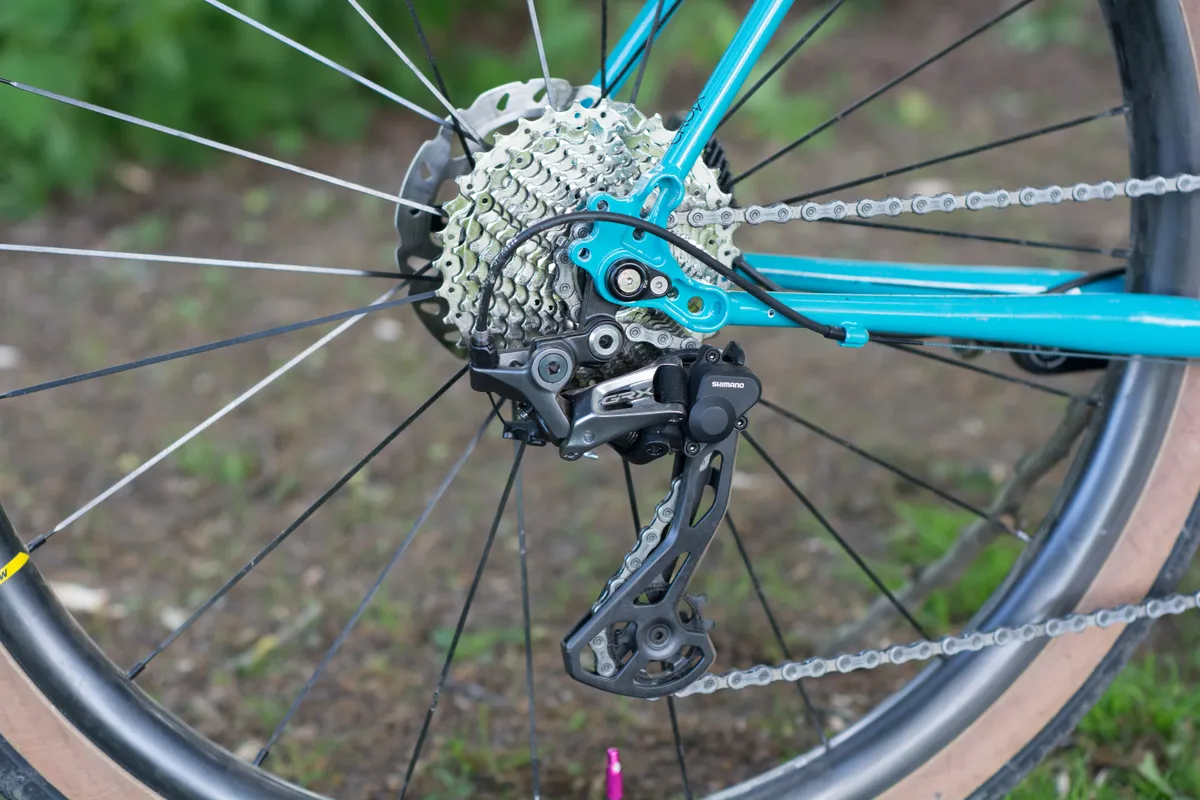
The Ultegra-level GRX RX810 derailleur is very similar to Ultegra RX, which came before it, with only slightly tweaked specs.
It uses the same Shadow RD+ geometry borrowed from mountain bikes, which tucks it under the rear dropout, making it less vulnerable to side impacts.
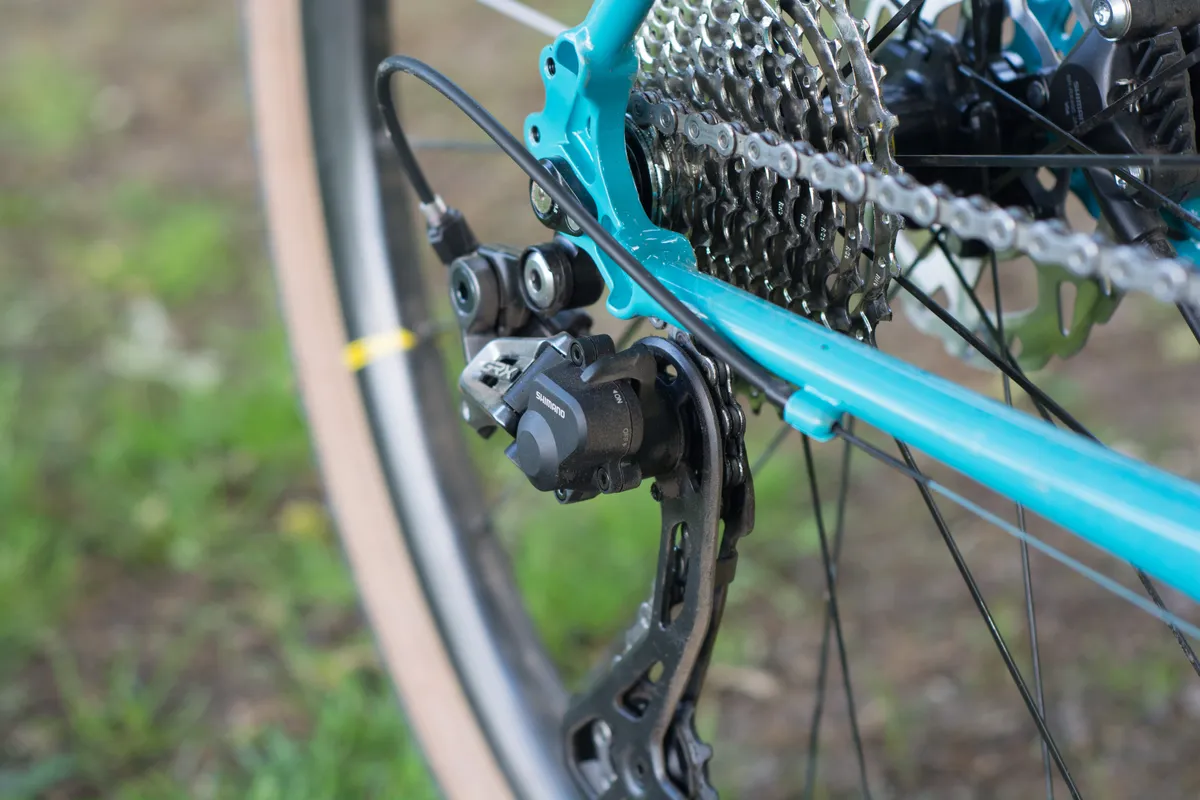
It’s equipped with an on-off switchable “chain stabiliser” – i.e. a clutch – which resists forward movement of the derailleur cage, reducing the tendency for the chain to bounce around.
I didn’t feel compelled to fiddle with this (and switching it off has no discernible effect on shifting), but you can actually adjust the amount of friction in the clutch if you want to, via a bolt underneath the outer cover.
Rear derailleur setup is straightforward following Shimano’s guidelines and the limit screws are multi-tool friendly because they have hex heads.
Shimano GRX rear derailleur compatibility
Shimano has extensive compatibility charts for its components and these show that, with some limitations on gearing options, 11-speed GRX rear derailleurs will work with existing 11-speed road components.
The RX810 derailleur shown here is meant for 2× setups, has a total capacity of 40t, and is designed for a maximum chainring difference of 17t and cassettes that top out between 30t and 34t.
For 1× drivetrains, the RX812 variant has a total capacity of 31t and is meant for cassettes with a 40t or 42t large sprocket.
The situation with 10-speed is a little more complicated. Tiagra 4700 shifters are compatible with GRX RX400 derailleurs (front and rear), but apparently 105 5700 and Ultegra 6700 shifters are not.
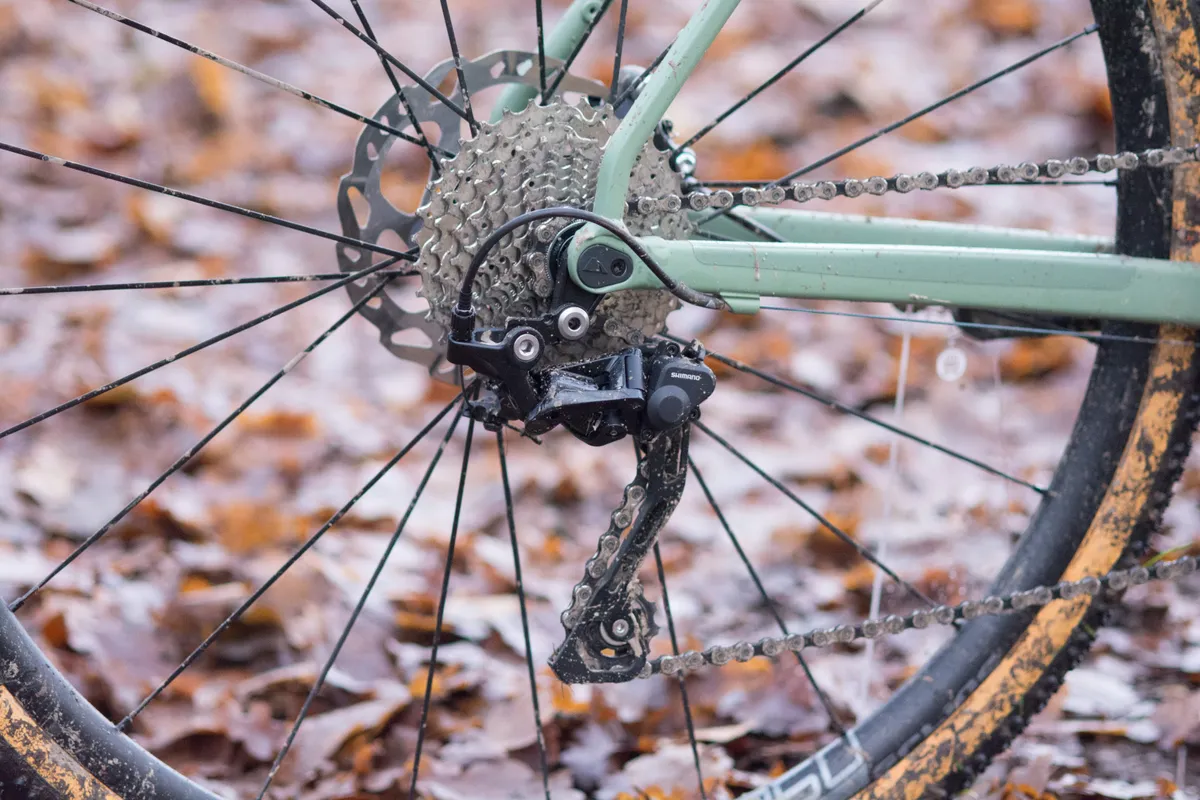
Interestingly, RX400 rear derailleurs will accept an 11-36 cassette, meaning that the lowest gear on offer is actually lower than it is with 11-speed.
As ever with these things, this is the official line, and there may (or may not) be some wiggle room in reality.
Shimano GRX cassettes and chains
There are no dedicated GRX cassettes and chains per se, these are simply borrowed from Shimano’s road and mountain bike ranges.
That means no compatibility pitfalls, as long as you stay within the recommended tooth ranges and match the number of gears.
The larger 11-speed cassettes, such as the 11-34 I have here, will fit on a 10-speed freehub (or an 11 with an extra spacer), a bonus if you’re upgrading an older bike.
Shimano GRX front derailleur
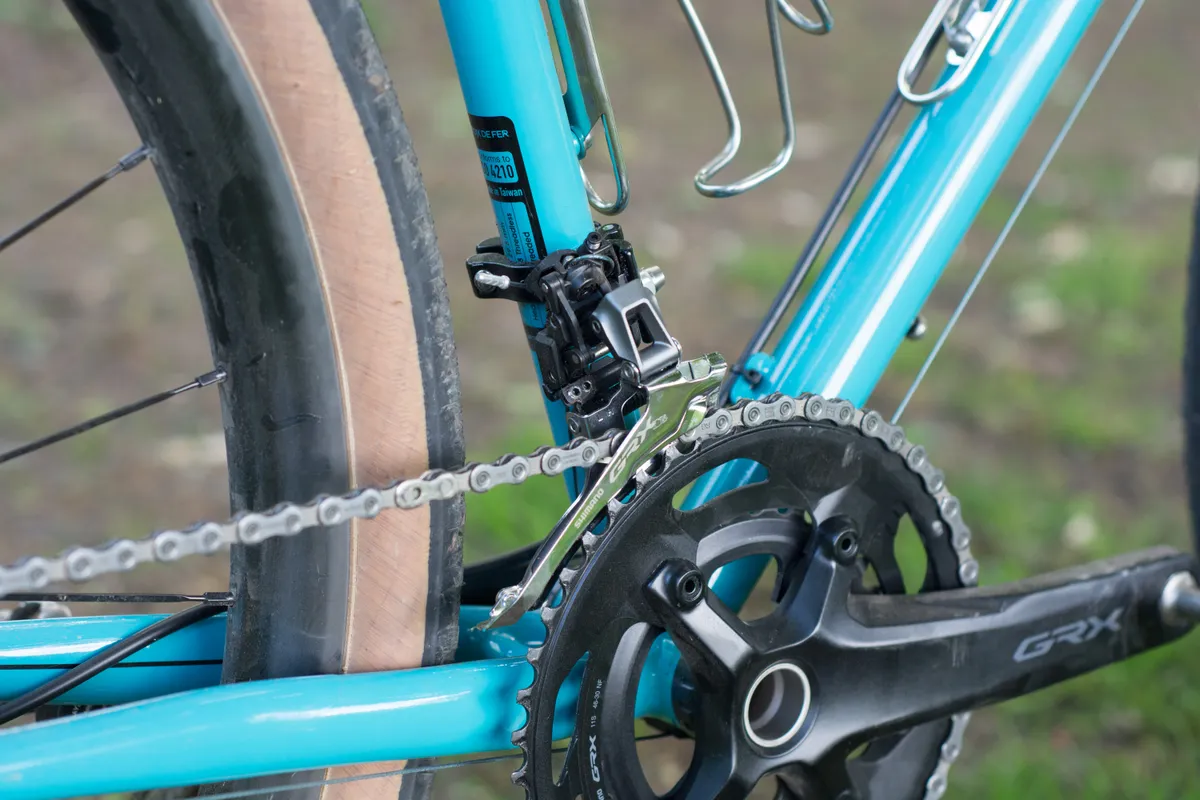
As above, GRX cranks have a 2.5mm wider chainline than road ones, so for 2× drivetrains you’ll need a GRX front derailleur to go with them.
There’s only one 11-speed mechanical GRX front derailleur, and it’s the Ultegra-level FD-RX810.
GRX front derailleurs use the same compact design we’ve grown used to on the road side, which includes a built-in cable tension adjustment, so you don’t need to fit an inline barrel adjuster elsewhere. Like the rear derailleur, it gets hex-headed limit screws.
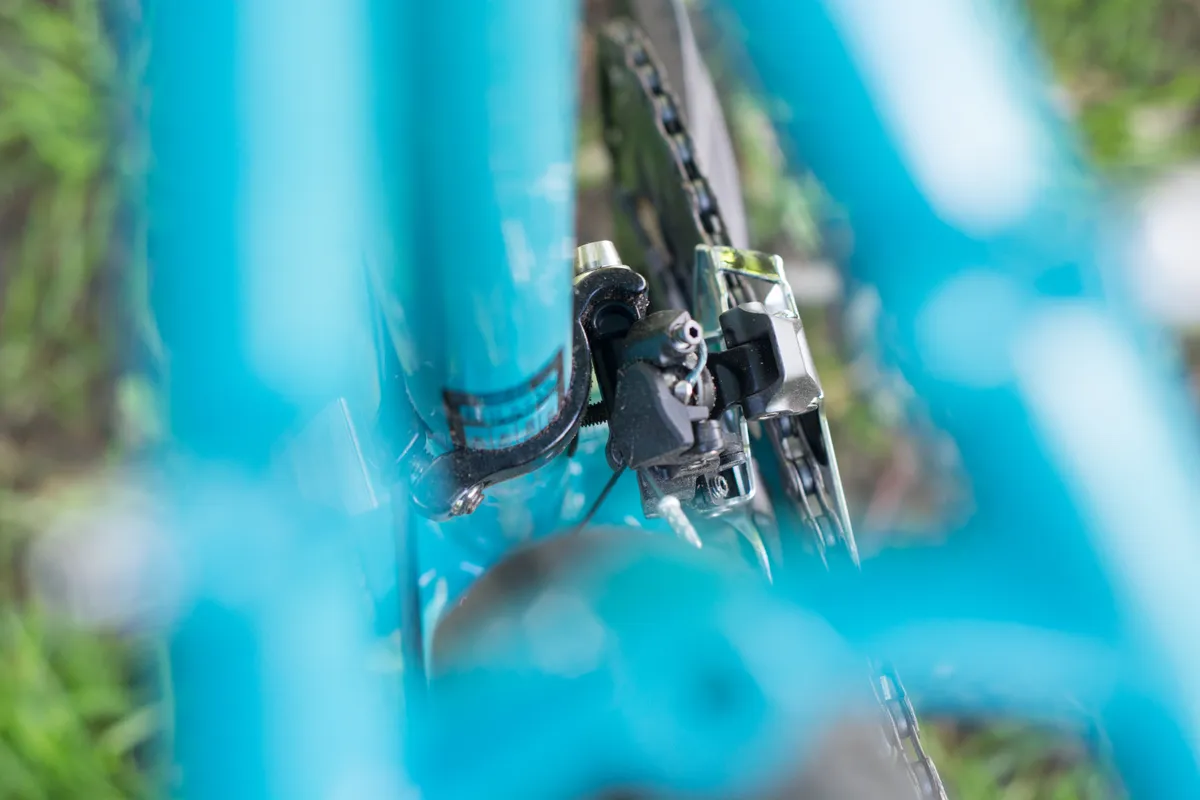
Cable routing and setup for this style of front derailleur isn’t quite as intuitive as it was with previous, simpler designs, so it’s well worth breaking out the dealer manual and following Shimano's steps to avoid headaches.
Once set up, shifting is excellent, with surprisingly low effort at the lever and consistent chain pick-up. Shimano’s front shifting is pretty much the best out there, and GRX is no exception in this regard.
Shimano GRX front derailleur compatibility
According to Shimano, road 11-speed shifters are compatible with GRX front derailleurs, so if you’re looking to fit a GRX crank and front derailleur to your existing bike, you won’t need additional parts to make it work.
As above, 10-speed compatibility is more limited.
Shimano GRX brakes
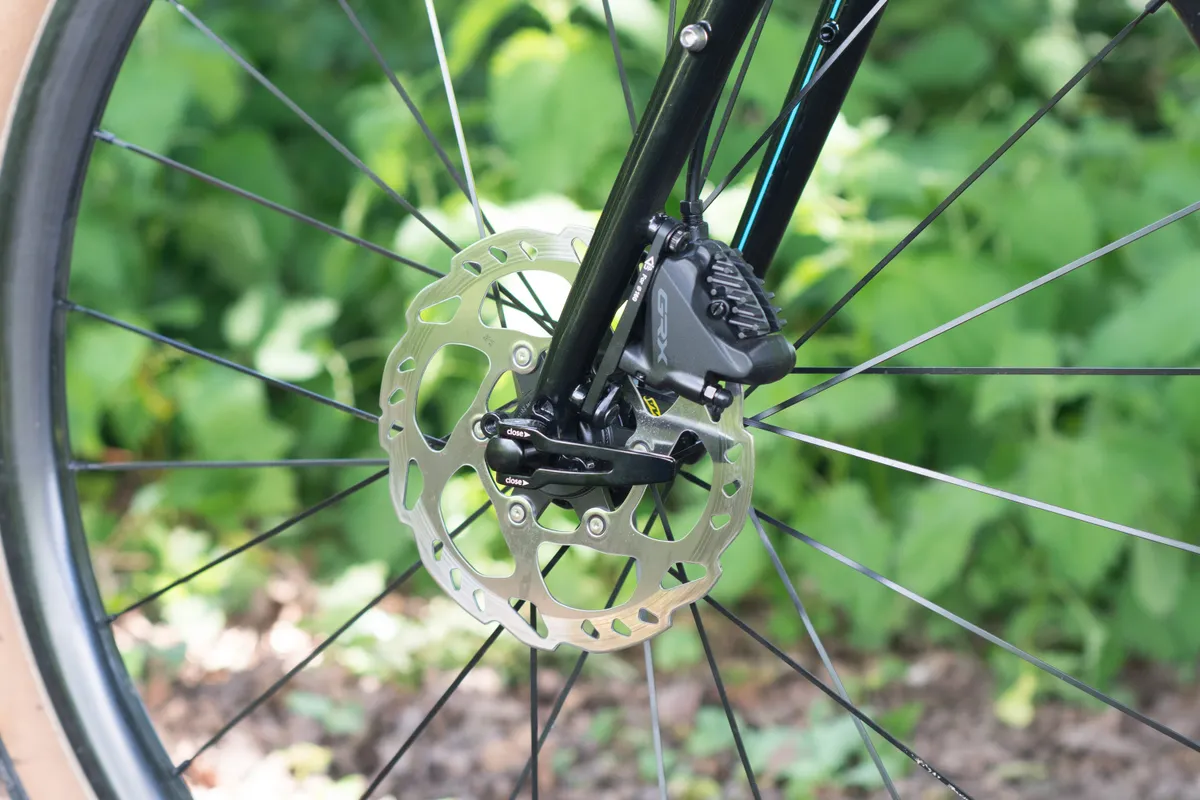
Branding aside, GRX brakes are almost indistinguishable from their road counterparts.
All are flat mount, so if you’re speccing an older frame with IS mounts, you’ll need either mountain bike or older road calipers instead. There are a handful of third-party adaptors on the market that allow you to convert flat-mount calipers to post-mount, but none of these are officially supported by Shimano, and compatibility is limited.
As with the derailleurs, there’s no direct 105-equivalent, so the choice is Ultegra-level RX810 calipers or, as I have here, Tiagra-level RX400s.
The former are prettier and slightly lighter, but functionally there’s little to choose between them. The RX810s have ceramic pistons, which are theoretically superior to the RX400s’ resin, but will you ever notice the difference? Probably not. Both are supplied with resin pads as standard, with fins for cooling.
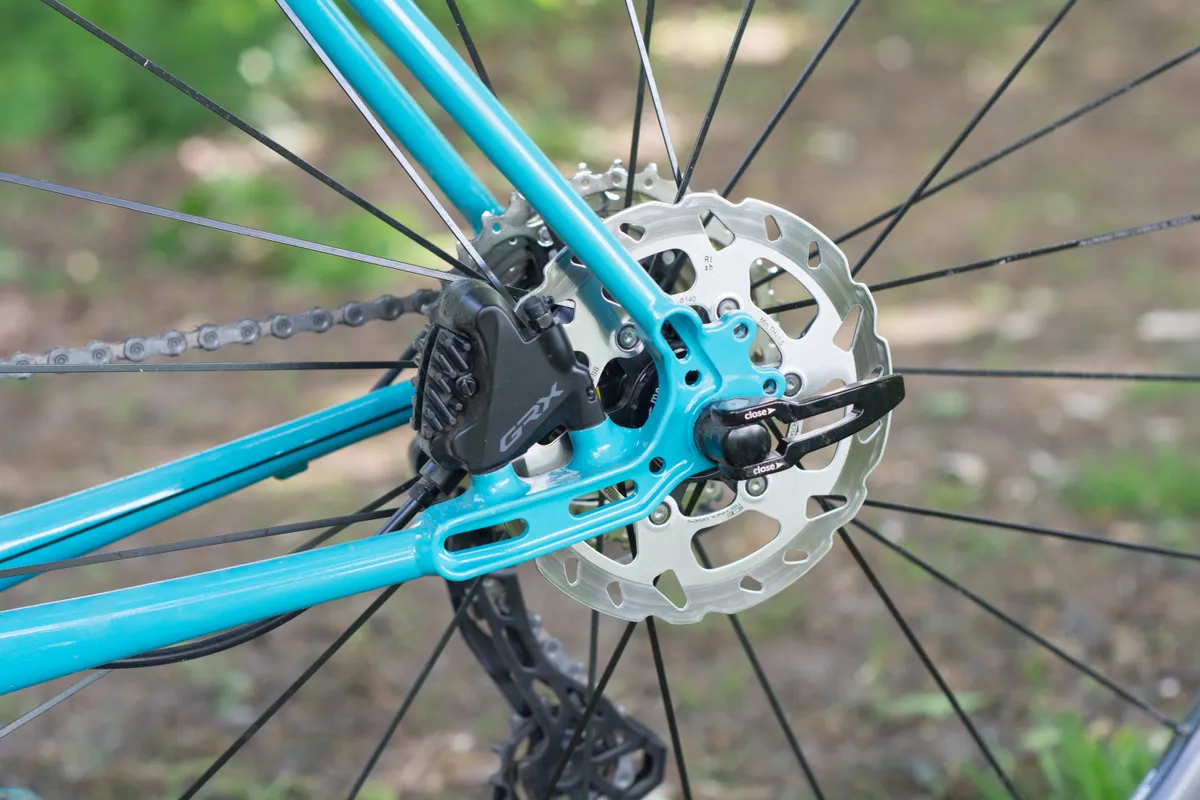
Rotors are again borrowed from the road and mountain bike ranges, with 140mm, 160mm and 180mm sizes available. (Your choice will be dictated by your frameset.)
Shimano GRX actual weights
Actual weights (except where noted) for the GRX drivetrain I tested are as follows:
- RX600 levers: 305g right / 316g left (2×)
- RX810 rear derailleur: 252g
- RX810 front derailleur: 96g
- RX600 46/30 11-speed crankset: 808g (170mm)
- SM-BBR60 threaded bottom bracket: 76g
- HG700 11-34 cassette: 362g (including spacer for 11-speed freehub)
- HG601 chain: 257g claimed (114 links)
- RX400 brake calipers: 121g front (caliper only) / 166g rear (including hose)
Shimano GRX pricing
Retail pricing for the GRX mechanical drivetrain I tested are as follows. As ever with groupsets, it should be noted that real-world pricing often bears little resemblance to RRPs.
- RX600 levers with RX400 calipers: £529.98 / $603.98 / €579.98 / AU$N/A (RX600 levers not sold, RX810 levers AU$778 pair, RX400 calipers $AU198 pair)
- RX810 rear derailleur: £107.99 / $111.99 / €109.99 / AU$199
- RX810 front derailleur: £50.99 / $51.99 / €54.99 / AU$99
- RX600 46/30 11-speed crankset: £124.99 / $129.99 / €149.99 / AU$199
- SM-BBR60 threaded bottom bracket: £32.99 / $23.99 / €27.99/ AU$49
- HG700 11-34 cassette: £57.99 / $56.99 / €42.99 / AU$99
- HG601 chain: £32.99 / $30.99 / €37.99 / AU$59
You can expect to see bikes with similar specs starting at around £1,600 / €2,000 / $2,000 / AU$3,000, but bike pricing is in flux at the moment, so that’s a moving target.
More Shimano GRX RX600 gravel groupset ride impressions
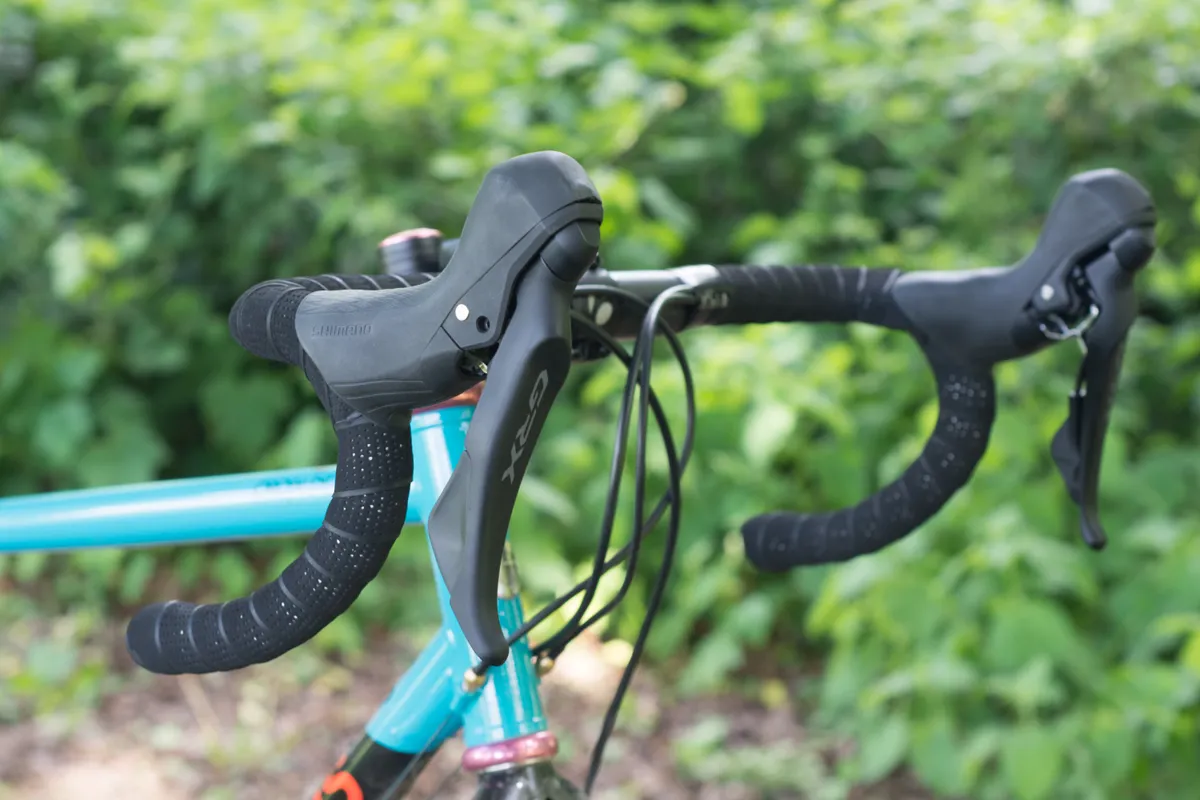
If you’re used to Shimano’s shifting and braking, nothing about GRX is going to feel surprising.
The shifting and braking are both as good as we’ve come to expect from Shimano and I cannot fault the ergonomics – the tall hoods feel very secure in your hands and the lever shaping is just right.
I’ll get into some gearing geekery below, but I will say that for non-competitive riding that mixes up gravel and road, the combination of a 46/30 crank and 11-34 cassette works brilliantly, offering low enough gears for serious gradients while not feeling lacking at the top end.
With faultless front shifting and chain security, I never found myself longing for 1× and, with the options Shimano currently offers, 2× is the better option for a versatile bike.
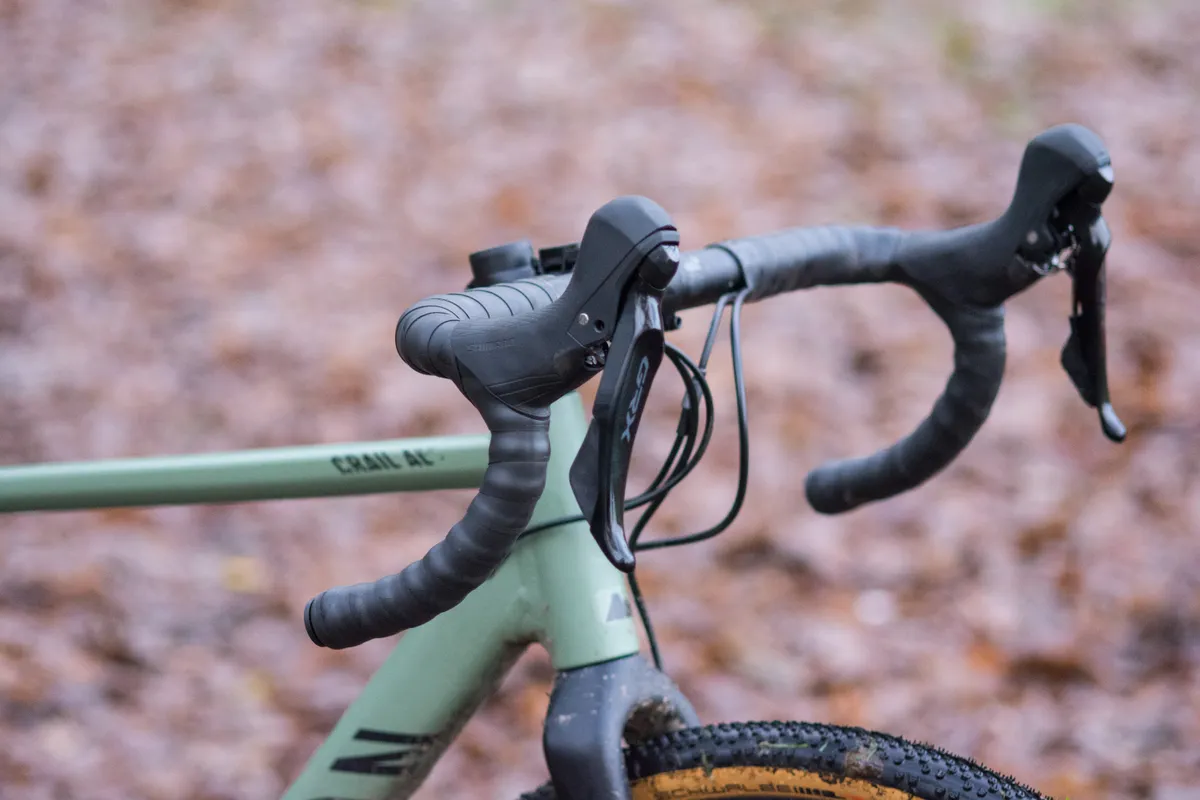
Having tested multiple bikes with GRX components, one of my key takeaways is an appreciation for just how good the entry-level 10-speed RX400 option is, as fitted to the Canyon Grail 6.
While RX400 is heavier and perhaps ever so slightly less refined, it really gives up very little to the more expensive 11-speed components.
It used to be that dropping down the groupset hierarchy meant putting up with underwhelming brakes but, thanks to discs, there's no meaningful performance difference between the upper and lower ends.
Shimano GRX gearing
Shimano GRX offers some really appealing options for gravel and adventure riding, but the options are somewhat convoluted because crank and cassette options vary depending on where you are in the range, and which options you choose.
A key consideration with gravel and adventure bikes is getting low enough gears, so let’s talk gear inches…
The 2×11-speed setup tested here gives a low gear of 30/34, which would equate to a 24.1in bottom end with a 700×38mm tyre.
Sticking with that tyre as a baseline, 10-speed GRX RX400 actually goes even lower, offering a possible 30/36 low gear, or 22.8in, coincidentally the same lowest gear offered by SRAM’s 12-speed Force eTap AXS in a 2× configuration.
Shimano’s 1× offering is slightly less impressive, with the lowest gear currently offered being a 40/42, giving you 26in. This setup would also only give you a top gear of 99.3in, falling well short of the 2× drivetrain’s 46/11 (114in) top end.
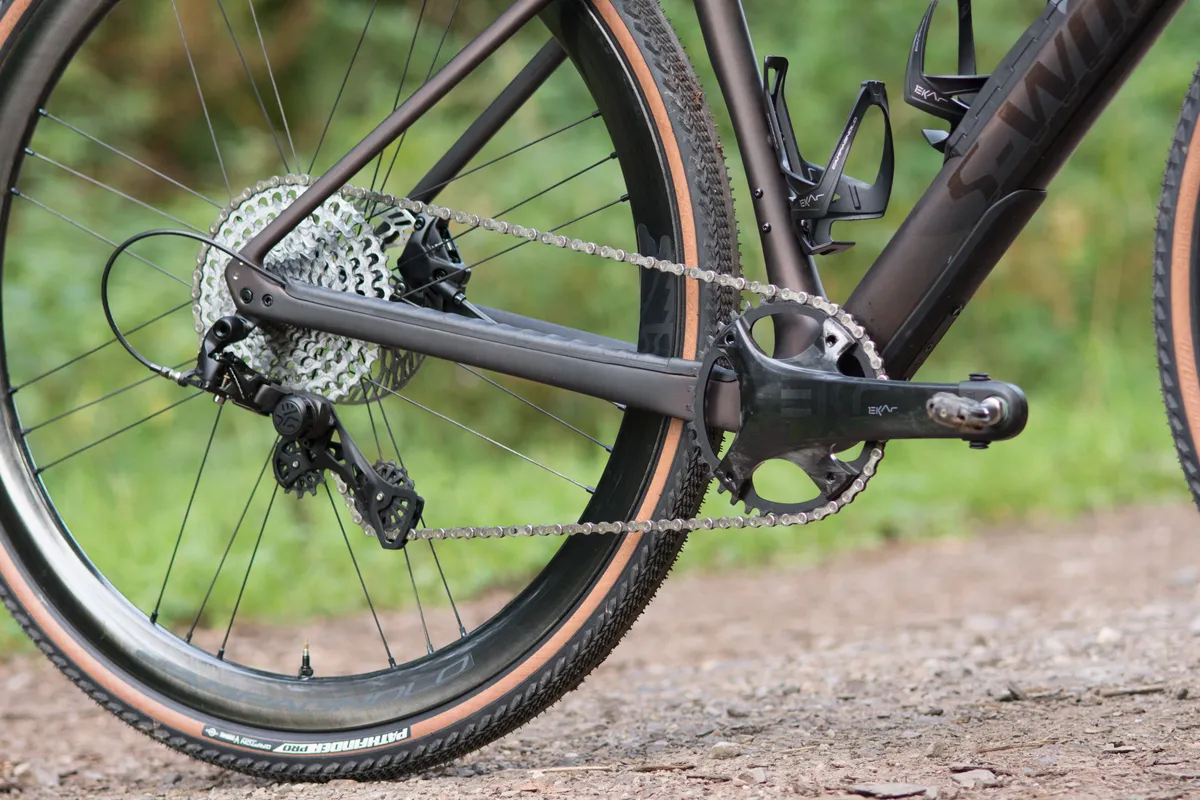
On the 1× front, Campagnolo’s 13-speed Ekar groupset has the edge. It offers a lowest possible gear of 38/44 or 23.6in while not sacrificing the top end thanks to cassettes that start at nine or 10t. (38/9 gives a healthy 115.4in)
SRAM’s Force 1 beats GRX narrowly too, with a 10-42 cassette options that gives a low gear of 38/42 (24.7in) and a high of 38/10 (103.8in).
As discussed above, a key advantage of GRX is the ability to mix and match with existing road groupsets, particularly among 11-speed components.
Even if you’re not buying a whole groupset, there’s considerable scope to upgrade existing setups in search of lower gears or, for example, to get features such as the clutch rear derailleur.
Shimano GRX overall
Shimano GRX mechanical isn’t daring, game changing or particularly surprising, it’s just very good at what it does.
If you’re Shimano-inclined and looking to spec a bike for adventure, gravel or gravel-adjacent activities, it offers a wealth of options to suit different budgets, all of which perform well in the real world and are easy to live with.
Shimano’s 1× offering lags a little behind some of the competition if you keep things strictly in the family and don’t mix in aftermarket components or push the spec limits.
The 2× options are excellent though, and at 11-speed level, the option to mix and match with Shimano road groupsets makes piecemeal upgrades an appealing possibility.
I wouldn’t hesitate to recommend GRX, and the mid-range setup I’ve focused on here is ideally suited to all manner of riding without costing the Earth.
Equally, I wouldn't turn my nose up at the 10-speed RX400 option, which is excellent in its own right.
Product
| Brand | shimano |
| Price | 893.96 EUR,937.92 GBP,1009.92 USD |
| br_whatWeTested | RX600 levers, RX810 derailleurs, RX600 46/30 crank, 11-34 cassette, RX400 brakes |
Features
| br_speed | 11 |
| br_brakeType | hydraulic_disc |
| Features | Chain stabiliser (clutch) rear derailleur, reach adjustment |
| br_cassetteOptions | 11-30, 11-32, 11-34, 11-40, 11-42 |
| br_chainringOptions | 46/30, 48/31, 40, 42 |
SQUIRREL_13083529
